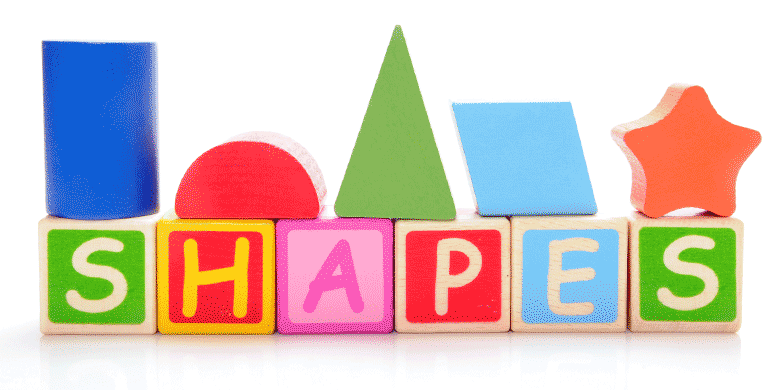
19 September, 2023
The Psychology of Shapes: Evoking Feelings and Memories with Form
From ancient cave drawings to modern architecture and design, shapes have always held a unique power over the human psyche. They can instantly evoke memories, create feelings, and even influence behaviour. In the realm of stress-relieving tools, the design and form of objects like stress balls play a significant role in their efficacy. Let’s look at the fascinating world of shape psychology and how it can impact our perception of stress balls.
The Symbolism of Shapes
Shapes are more than mere forms; they are powerful symbols deeply embedded in our collective consciousness, wielding the ability to evoke a spectrum of emotions, memories, and associations. For Example:
1) Circle: Unity, Completeness, and Infinity
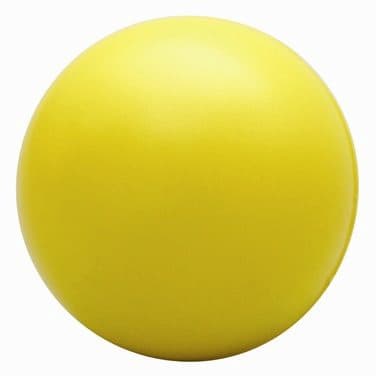
The circle is a shape that, due to its uninterrupted and unbroken nature, has universally been recognized as a representation of unity, wholeness, and eternity. In cultures around the world, this shape is revered for its perfection, devoid of beginnings or endings.
Cultural Context: In many ancient cultures, the circle represents the sun and the moon, both of which were objects of fascination and veneration. This reverence can be seen in structures like Stonehenge or in mandalas from Hindu and Buddhist traditions, which symbolize the universe's cyclical nature.
Historical Context: Throughout history, the circle has been used in rituals and ceremonies. For instance, people often gather in circles for group activities or dances, symbolising community and shared experience.
Biological Context: On a biological level, the human eye is naturally drawn to circular shapes, finding comfort in their symmetry. This might explain our preference for rounded objects like pebbles or our instinct to gather around a campfire.
Real-world example: The wedding ring, a circle, embodies eternal love, a bond without end, and a pledge of unity and commitment.
2) Square/Cube: Stability, Balance, and Reliability
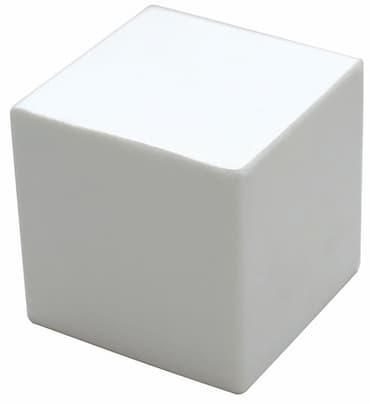
The square, with its four equal sides, stands firmly, representing the Earth, solidity, and the material world. Expanding to a three-dimensional form as a cube further emphasises depth, grounding, and presence.
Cultural Context: In many Eastern traditions, the square often symbolizes the Earth. It's about grounding, order, and classification.
Historical Context: Architecturally, squares and cubes have been foundational. Ancient builders instinctively knew of a square base's stability, resulting in enduring structures that have lasted millennia.
Biological Context: Our inclination towards square shapes might be evolutionary. Recognizing stable platforms or resting areas was beneficial for early humans.
Real-world example: The foundation stones of buildings, often square, act as the stable base on which structures rise, a testament to the shape's reliability.
3) Triangle: Conflict, Stability, Direction
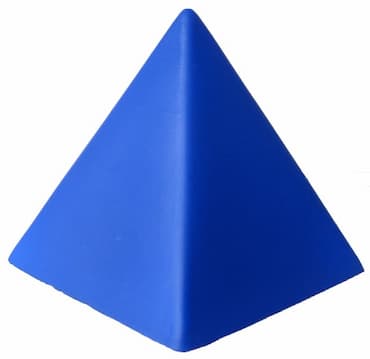
The triangle or pyramid, with its three points and sides, is a dynamic shape. It can signify different meanings depending on its orientation—whether it points upward or downward.
Cultural Context: In Christian symbolism, the triangle represents the Holy Trinity. In other cultures, it might symbolize elements like water, fire, or mountains.
Historical Context: Historically, the triangle has been a significant shape in art, architecture, and spirituality. The pyramids of Egypt, triangular in form, symbolize the pharaoh's journey to the sun god Ra.
Biological Context: Triangles, with their sharp points, can signify danger or caution, a biological cue that we should be alert or wary.
Real-world example: The pyramids, monumental triangles, are not just architectural marvels but also represent the mysteries of ancient civilizations, their beliefs, and their connections to the cosmos.
4) Heart: Love, Passion, Emotion
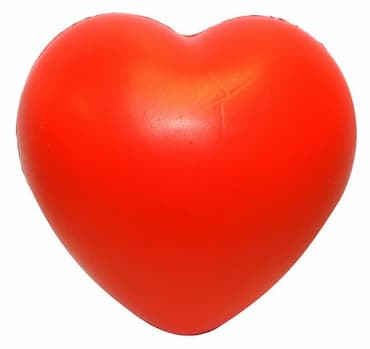
Although not an accurate representation of the human heart, the heart shape has universally come to signify love, compassion, and deep emotional connections.
Cultural Context: Almost every culture recognizes the heart as a symbol of affection, love, and care. This shape transcends language barriers and resonates universally.
Historical Context: Throughout history, the heart has been used in art, literature, and religion to convey deep emotional states, from love to sorrow.
Biological Context: Biologically, feelings of love and passion lead to an increased heart rate, linking emotions to our physical heart.
Real-world example: Valentine's Day, a celebration of love and affection, prominently features the heart shape, from chocolates to cards, epitomizing romantic love and deep emotional bonds.
Shapes and Stress Balls
The allure of stress balls goes beyond their tactile properties. While their primary function is to provide a physical outlet for stress relief, the shape of the ball can play a significant role in evoking emotional responses and offering psychological comfort.
1) Heart-shaped Stress Ball
The universally recognisable heart shape, symbolising affection, passion, and deep emotional connections, can play a critical role in providing solace during challenging times.
Emotional Resonance: Squeezing a heart-shaped stress ball might evoke feelings of being loved, cherished, and understood. It can serve as a tactile reminder that, even in moments of loneliness or despair, warmth and affection are within reach.
Real-life examples:
A teenager navigating the challenges of high school, facing peer pressure and academic performance stress, might find comfort in the heart-shaped stress ball, subconsciously reminding them of the love and support of family and friends.
In therapy or counselling settings, therapists might hand out heart-shaped stress balls to patients dealing with trauma or emotional pain, reinforcing the idea of healing through love and compassion.
2) Cube-shaped Stress Ball
The cube, with its equal sides and edges, embodies stability, balance, and a strong foundation. This geometric form offers more than just a tactile experience—it also provides an emotional grounding.
Emotional Resonance: In turbulent times, when life feels chaotic and unpredictable, the act of squeezing a cube-shaped stress ball might subconsciously evoke feelings of order, grounding, and control. It serves as a reminder that even amidst chaos, elements of our life remain stable and dependable.
Real-life examples:
A student preparing for a major examination might opt for a cube-shaped stress ball. While it provides an outlet for their pent-up anxiety, it also symbolically reinforces the idea of a stable foundation in their knowledge and preparation.
An individual undergoing a major life transition, such as moving to a new city or starting a new job, might gravitate towards the cube-shaped stress ball. Amidst the whirlwind of changes, the cube offers a tangible sense of grounding.
In essence, the shapes of stress balls do more than meet the eye. They engage with our subconscious, tapping into deep-seated emotions and memories, and offer both physical and psychological relief. In choosing a stress ball, one might not only consider its tactile properties but also the emotional resonance its shape provides.
Biological Responses and Shapes
Beyond cultural symbolism, our brains are hardwired to respond to shapes in certain ways. For instance, soft curves and rounded shapes are often perceived as more comforting and safe, whereas sharp angles and irregular shapes might be seen as more threatening or unsettling. This is possibly because, in nature, sharp objects or angles often denote danger, like thorns or teeth.
A rounded stress ball might evoke feelings of safety and warmth, much like how infants and young children are comforted by the embrace of a caretaker. On the other hand, an irregularly shaped stress ball, with points and edges, might provide more sensory feedback but could feel less "comforting" due to its sharpness.
Conclusion
In essence, while the primary function of a stress ball is to offer tactile relief, its shape can significantly enhance or alter its stress-relieving properties. Whether it's the warm embrace of a heart-shaped stress ball or the grounded stability of a cube, shapes tap into our psychological and biological responses, making the experience of using a stress-relief tool multifaceted and profound.
The Stress Balls Only Team




